Foundations of Orality
Module 1
Explore God’s design for communicating among people created in His image. How can we communicate with higher impact and scale? We will discover how orality affects every aspect of communication.

Lesson 2 – Disciplines of Orality
This lesson will focus on the 7 descriptive disciplines of orality employed by Jesus.
Click the arrows for more details.
This box provides general information on how our lessons are structured
The content of this site is hidden at first and meant to be revealed once the previous task is complete to guide you along the learning experience.
This is a resource for you! The lessons can be studied independently, in groups, or as part of the IOS certification program. Use it to learn or to 🚂 train others.
We encourage interaction with the material and with others whenever you encounter these emojis 😃🤔🤯.
This frame indicates a story, example, or case study.
Please leave your observations, findings, and links to additional resources in the 💬 comment section below, as they will benefit others. Enjoy!
The Best Teacher
Think about the favorite teacher you had…
😃🤔🤯 Why was this person your favorite teacher? Record an audiofile of yourself reflecting on what made this teacher so special.
The Master Teacher
Even in secular circles, Jesus is widely regarded as a master teacher.
😃🤔🤯 List at least 5 Bible passages of Jesus teaching. For each passage you enlisted, describe Jesus’ teaching approach, the audience, and the outcome of His lesson.
The “how” to say it
I don’t speak on my own authority. The Father who sent me has commanded me what to say and how to say it.
John 12:49, NLT
Today, most education, including theological education focuses on the content—on WHAT to say.
While content is king, what is the use if the content can’t be delivered?
Jesus understood HOW to package God’s message in a way, that people understood it clearly. People did not always agree with Jesus but they understood!
Communication model of Jesus
These are 7 distinct communication tools Jesus used to deliver His message and make it stick.
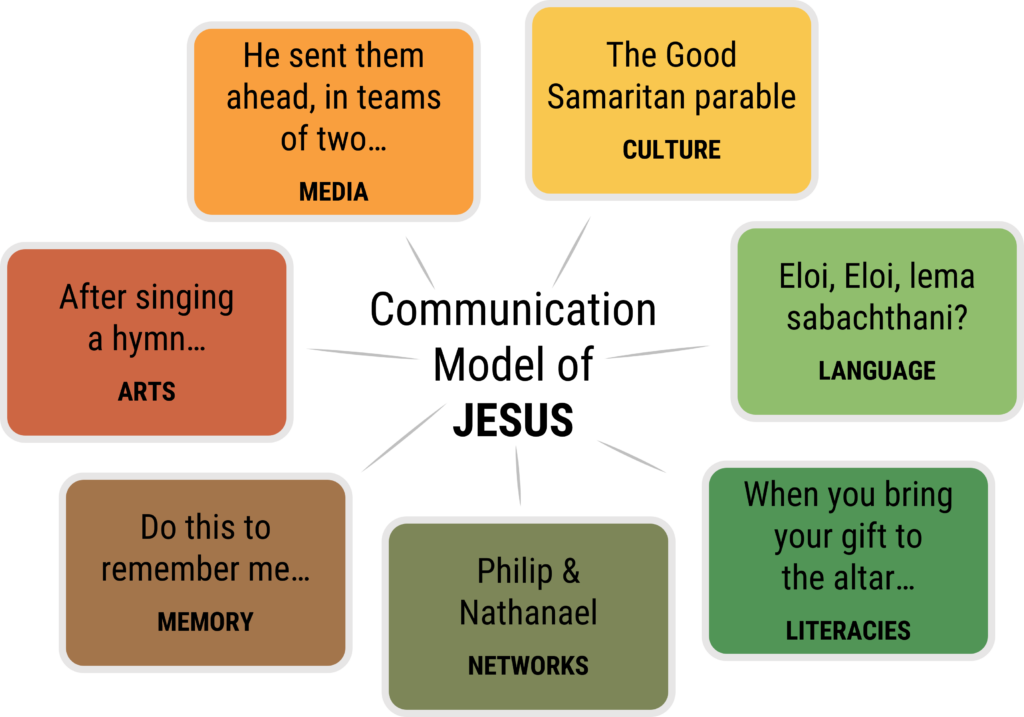
- Culture (Luke 10:25-37)
- Language (Mark 15:34)
- Literacies (Matthew 5:23-24)
- Networks (John 1:43-51)
- Memory (Luke 22:19)
- Arts (Matthew 26:30)
- Media (Luke 10:1)
😃🤔🤯 Find at least one more example for each communication tool Jesus used.
The 7 Disciplines of Orality
We call the 7 communication tools employed by Jesus the Disciplines of Orality.
Our Orality by Design module will come back to these 7 disciplines.
As you can see in the figure below, these 7 disciplines frame/package the content/message.
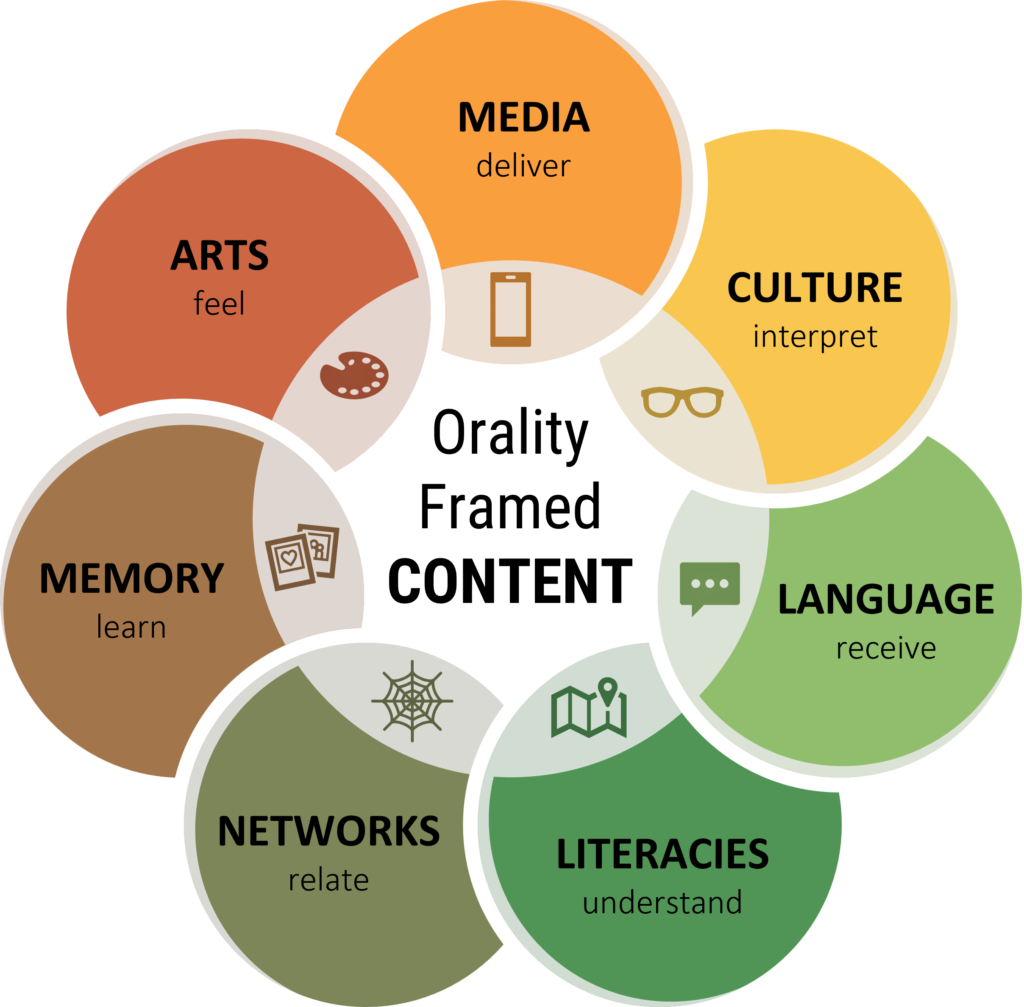
The Disciplines of Orality are also the foundation of the missiological definition of orality.
A complex utilizing 7 descriptive disciplines that expand the capacity of orality traits to help OTHERS receive, process, remember and pass on news, important information, and truths.
The 7 Disciplines of Orality are modeled after Jesus’ communication approach and have been proven to significantly increase the impact and retention of the message when all seven are applied.
The Orality Journal dedicated vol. 2 issue 2 entirely to the 7 disciplines of orality with a lead article by Charles Madinger serving as introduction.1
What follows now is a brief overview of the orality disciplines.
Culture 👓
What makes US us & them THEM?
Culture defines us. It is also what makes us different from others.
It shapes how we organize and understand the reality around us.


Here are just a few areas that our culture influences:
- Worldview
- Kinship
- Marriage & family
- Roles & relationships
- Appropriate dress & appearance
- Food and “manners”
- Stories, histories, myths
- Rituals, rites & celebrations
- Heroes
- Laws
- Taboos
- Symbols
- Technologies
😃🤔🤯 Consider a people group that is different from your own. If you’re living in a foreign country, think about the culture of your host country. Create a table like the one below to compare and contrast your culture with the other culture you’re reflecting on.
Remember, this exercise is about understanding differences, not determining which cultural traits are superior!
| My culture | Different culture |
|---|---|
| My worldview | Their worldview |
| My kinship system | Their kinship system |
| … | … |
Jesus & culture
The Biblical narrative did not occur in a vacuum. It was embedded in culture. So was Jesus. He was a contemporary of the Jewish culture of 2000 years ago.
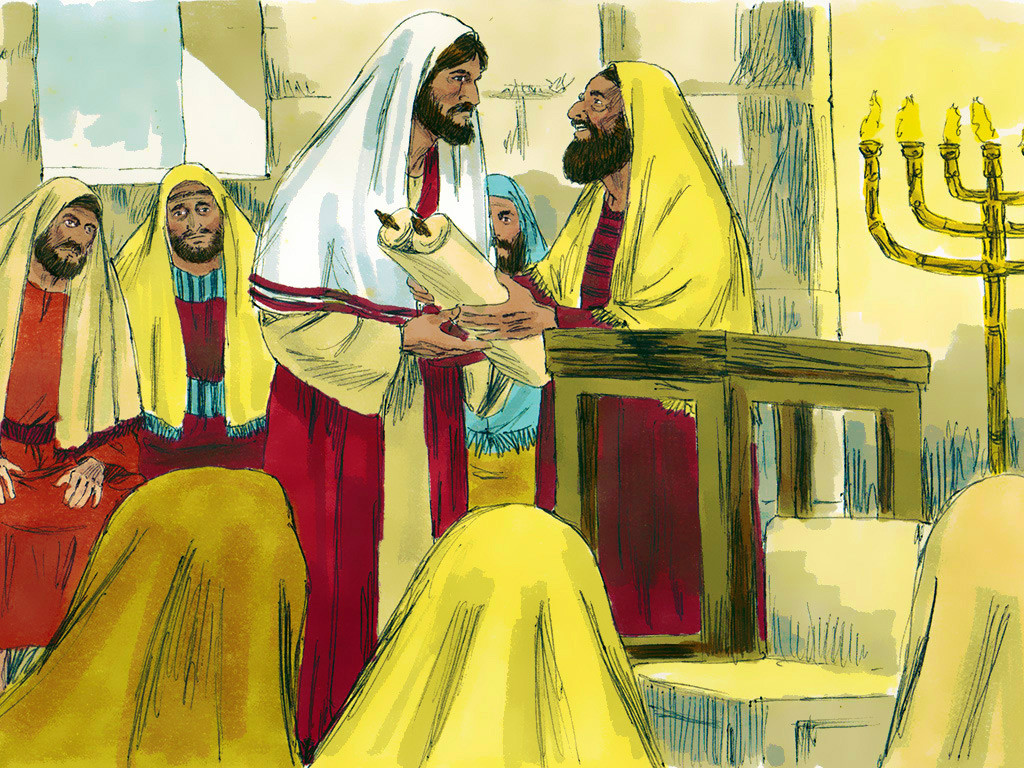
😃🤔🤯 Read Luke 4:14-30 and make a list of at least 10 cultural references in the text.
Do you agree that knowing the cultural, geographical, political, economical, and historical background is helpful to understand the text?
Jesus knew and used His culture.
These are some examples from the text above: Jesus…

- began at His hometown synagogue: Jesus started His ministry by speaking at the synagogue in Nazareth, where He was well known.
- participated in the Sabbath gathering: He joined the community on the Sabbath, a day dedicated to worship and teaching in the synagogue.
- stood up to read from the Scriptures: Jesus was given the honor of reading from the scroll of the prophet Isaiah, a significant moment in the Jewish tradition.
- rolled up the scroll with reverence: After reading, He carefully rolled up the scroll, showing deep respect for the sacred text.
- handed the scroll back to the attendant: He returned the scroll to the synagogue attendant, following the customary practice.
- quoted a well-known proverb: Jesus addressed the crowd, quoting the proverb, “Physician, heal yourself,” challenging their expectations.
- was taken out of town to be killed: His message provoked such anger that the people attempted to throw Him off a cliff, but He miraculously passed through the crowd unharmed.
Orality is about understanding and aligning with the communication preferences and tools specific to a culture. It’s recognizing how information is traditionally shared for more impactful communication.
Language 💬
What sounds “right?”
Language, dialect, accent, and non-verbal clues indicate that the speaker is “one of us.”

Even hand gestures are not universal! For example, while the thumbs-up gesture is often interpreted as a sign of approval or agreement in many Western cultures, it can be considered offensive in some Middle Eastern countries. Similarly, the “OK” gesture, which signifies that everything is fine in many places, can have a completely different meaning in others, including being seen as an insult.
These cultural differences highlight how non-verbal communication varies widely around the world, emphasizing the importance of understanding the context and customs of different cultures. How do you think our awareness of these differences can influence our interactions in a multicultural society?
Language is one of our main communication tools.
😃🤔🤯 Look for 2 or 3 volunteers for this activity and give each of them a pen and a piece of paper.
Don’t show them the geometrical figure and don’t look at their paper.
Use only words, describe the figure as they need to draw it on the paper.
After looking at the results: Are Language and Words sufissient for accurate communication?

Language can sometimes be funny
A Western teacher asks the students:
Use dandelion in a sentence.

African student answers:

De cheetah is faster dandelion.
Language in the Bible
The Bible was originally written in Hebrew, Aramaic, and Greek.
Jesus probably spoke Hebrew, Aramaic, Greek, and Roman, which was common during that period in Judea.
Paul also knew at least a few languages:
Paul: Brothers and fathers, please let me defend myself against these charges.
When they heard him speaking Aramaic, a hush came over the crowd.
Acts 22:1-2, VOICE
😃🤔🤯 How come the crowd is surprised? Relate Paul speaking Aramaic to the people gathered at his arrest in Jerusalem and the use of language in your ministry. Make an audio recording of you replecting aloud about it.
Literacies 🗺️
Literacy is commonly associated with reading and writing, but these are just one form of literacy.
Literacies, in a broader sense, encompass a range of skills and can be synonymous with understanding, including the ability to interpret and engage with various types of information and communication.




The terms we use are key in conveying precise meanings, while concepts help to organize these terms into understandable ideas. Symbols—whether letters, images, or gestures—represent these terms and concepts, allowing us to communicate complex ideas quickly. Technology, especially print and information technology (IT), has revolutionized how these symbols are shared, allowing knowledge to spread widely and persist over time. Finally, meaning emerges from the interaction of all these elements, enabling us to comprehend and communicate effectively.
Literacy can also mean abilities or skills like welding or hunting.
😃🤔🤯 What are the 5 most important literacies one must master in your context? Explain why you chose these ones.
Literacies in the Bible
Then Paul said: I am a Jew, born in Tarsus of Cilicia, but brought up in this city. I studied under Gamaliel and was thoroughly trained in the law of our ancestors. I was just as zealous for God as any of you are today. I persecuted the followers of this Way to their death, arresting both men and women and throwing them into prison, as the high priest and all the Council can themselves testify. I even obtained letters from them to their associates in Damascus, and went there to bring these people as prisoners to Jerusalem to be punished.
Acts 22:3-5, NIV
In these verses, we encounter political, religious, judiciary, academic, and other literacies.
😃🤔🤯 Highlight as many literacies as you can find in Acts 22:3-5.
Multiple literacies
Orality and holistic communication must account for all forms of literacy, not just reading and writing. Below is a list of various domains where different literacies are essential:
- Scientific
- Economic
- Communication
- Technological
- Visual
- Information
- Multicultural
- Global Awareness
- IT
- Productivity
- Content
- Critical
Literacy as a 21st-century Issue
For this last section, let’s focus on literacy as reading and writing ability.
Many organizations see literacy as crucial in eliminating poverty and related issues like hunger and conflicts in the world.
- There are more non-literate people in the world today than at any time in the history of civilization.
- Literacy is not yet gaining hold among adults in developing countries. The number of non-literate adults steadily increased during the entire 20th century, especially among women.
- Most readers have poor comprehension (functional illiteracy is when people have reading abilities but very poor comprehension).
- 30-50 million people are added to the illiteracy numbers each year.
- All teaching programs have been written by literates with little attention to orality – how oral cultures receive and process information.
😃🤔🤯 How do these facts and statistics make you feel? Make an audio or video recording of you replecting on the dynamic of orality and literacy.
Networks 🕸️
For a message to become viral, it needs a network!
😃🤔🤯 How many connections does it take for your network to reach the president of your country?
Natural connections
Individuals naturally form connections in any network, creating a web of relationships that serve various roles.
Some connections are based on affinity—shared interests, values, or goals.
Others revolve around accountability, where individuals are responsible for supporting and guiding each other.
Gatekeepers are key figures within networks who control access to resources or opportunities, influencing how connections and interactions are formed.
😃🤔🤯 Affinity groups are people you may reach out to.
List 3 groups with similar interests to yours that can lead to meaningful interactions.
😃🤔🤯 Your coworkers and peers provide accountability.
Who are 3 people who can provide coaching, counsel, and mentorship?
😃🤔🤯 Gatekeepers are crucial for the success of a project.
What persons or organizations may support or hinder your efforts?
Each type of connection plays a crucial role in the dynamics and flow of the network, shaping how people interact and collaborate.
Jesus’ network
How did Jesus start building the network of disciples around him?
📔 Read John 1:40-46.
😃🤔🤯 On a sheet of paper 📄, write all the persons mentioned in these verses. Then make connections between them and describe those connections.
Memory 🖼️
📔 Read Deuteronomy 6:4-9.
😃🤔🤯 Make a list of all mnemonic methods used by God for Israel in the verses you just read.
Additionally, find 5 more Old Testament passages were God user different memory tools for His people.
Memory and literacy
🎞️
Watch How to draw to remember more.
📔 Esther 2:23, 6:1-2 and Nehemiah 9:3-38.
😃🤔🤯 Make a mindmap that connects memory with the arts and literacies.
Helping the 🧠brain to process and learn
Many styles of learning help the brain to process, learn and remember better.
- Active learning: Learners engage directly with the material through activities and problem-solving.
- Bridge learning: New concepts are connected to prior knowledge, helping learners understand complex ideas.
- Communicative: Learning happens through dialogue and interaction, emphasizing language and understanding.
- Memorization methods: Learners focus on retention through repetition or mnemonic techniques.
- Participatory environment: Involves collaborative learning where learners actively contribute to the process.
- Repetition & redundancy: Reinforcing knowledge by repeating content to ensure retention.
- Time spacing: Learning is spread over time with intervals between sessions to improve retention.
- Symbols: Visual or conceptual representations are used to convey abstract ideas.
- Pictograms: Simple images represent words or concepts to aid understanding.
- Object lessons: Physical objects are used to illustrate abstract or complex ideas.
- Haptics (walk-thru): Learners physically engage with material through touch or movement to enhance learning.
😃🤔🤯 From the list above, chose 2 learning methods and describe how you can implement them in your ministry.
Arts 🎨
After crossing the Red Sea, Miriam composed a song and led the Israelite women in dance as a powerful expression of thanksgiving and praise to God. This emotional act of worship helped engrave the miraculous event in the Israelites’ collective memory.
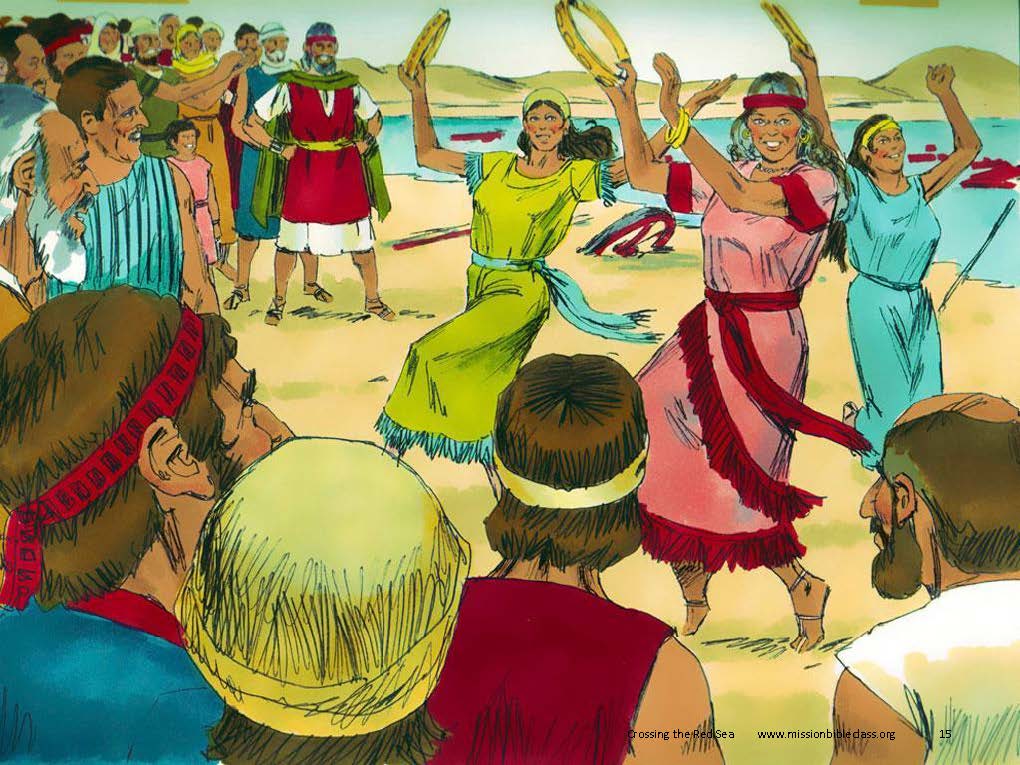
Miriam: Sing to the Eternal One, for He has won a great victory; He has thrown the horse and its chariot into the sea.
Exodus 15:21, VOICE
Here are some examples of the arts:
- Music, dance
- Drama
- Narrative, storytelling
- Riddles
- Poetry, prose
- Interviews, discussions
- Drawing, painting, printmaking
- Photography
- Video, animation
- Jewelry
- Architecture
- Sculpting, carving
- Proverbs, folktales
- Tapestry
- Pottery, ceramics, mosaic
Arts 📦 package the content
The arts uniquely bridge knowledge, concepts, and stories with our emotions, allowing us to experience and internalize information deeper by evoking empathy, imagination, and emotional resonance. The arts…
- Resonate: The arts resonate by connecting deeply with emotions, making the message of the content more relatable and impactful.
- Integrate: Through various forms like music or visual art, the arts integrate complex ideas into simple, unified expressions that are easier to grasp and retain.
- Contemplate: The arts invite audiences to contemplate deeper meanings and emotions, allowing them to reflect on the message in a more personal way.
- Internalize: By engaging with the senses and emotions, the arts help individuals internalize concepts, embedding them into long-term memory.
- Memorize: Arts like music and poetry aid in memorization by using rhythm, repetition, and visual cues to reinforce key content.
😃🤔🤯 Explain in detail how you will use at least two new art forms in your ministry that you haven’t used before.
Media 📱
Marshall McLuhan’s famous quote, “The medium is the message”2 suggests that the form of communication is as important as, if not more than, the content it carries. The medium shapes and influences how the message is perceived, understood, and interacted with.
- The medium defines the extent and scope of the message’s reach.
- The medium shapes the emotional connection and affinity with the audience.
- The medium influences the level of accountability tied to the message.
- The medium determines the perceived value and worth of the message.
The media we chose to deliver a message relevant!
Let’s talk about 📺 mass media, 🏫 collective (mezzo) media, and 🕸️ small media (micro casting).
Mass media 📺
Typically, these come to mind:
- Radio
- Television
- Print/published
- New media, internet
- Multi-modal

😃🤔🤯 Find examples of mass media used in the Bible.
Examples
📔 Read Joshua 8:32-35 and Esther 8:9-14.
Mass media is communicating with many people in different locations at the same time.
😃🤔🤯 How can you use mass media for your ministry?
Collective media 🏫
Some examples include:
- Conferences
- Seminars
- Conventions
- Classes
- Services

😃🤔🤯 Find examples of collective media used in the Bible.
Example
And so Jesus went throughout Galilee. He taught in the synagogues. He preached the good news of the Kingdom, and He healed people, ridding their bodies of sickness and disease.
Matthew 4:23, VOICE
Collective media is communicating with a large group of people at a set time and location.
😃🤔🤯 How can you use collective media for your ministry?
Small media 🕸️
Examples that come to mind can be:
- Social channels
- Mp3 & 4
- Cassette
- Smartphones
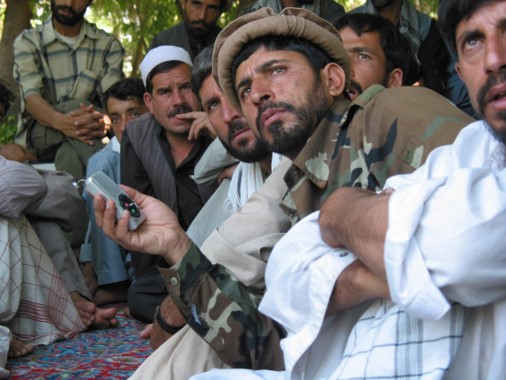
😃🤔🤯 Find examples of small media used in the Bible.
Example
📔 Read Luke 10:1-17.
Small media is communicating with an individual or small group of people gathered at the same time and place.
😃🤔🤯 How can you use small media for your ministry?
Going viral
In today’s digital media landscape, the power of orality is being revitalized as content spreads rapidly across platforms. By focusing on key aspects like oral content design, efficient content production (recording, editing), and strategic distribution channels, creators can harness the influence of digital media to amplify their messages and reach wider audiences.
🎞️
Watch this webinar recording about the power of orality and digital media.
😃🤔🤯 Create a mindmap on a sheet of paper that branches out in mass, collective, small and digital media. Add details and action steps you can take to maximize the reach of your message.
Footnotes
- 📄 Madinger, Charles. “A Literate’s Guide to the Oral Galaxy.” Orality Journal 2, no. 2 (2013): 13–40. ↩︎
- 📔 McLuhan, Marshall. Understanding Media: The Extensions of Man. New York, NY: McGraw-Hill Book Company, 1964, 7.
↩︎
🎉Congratulations, you finished this lesson!
Leave additional resources and ideas for others in the 💬comment section below!

Leave a Reply